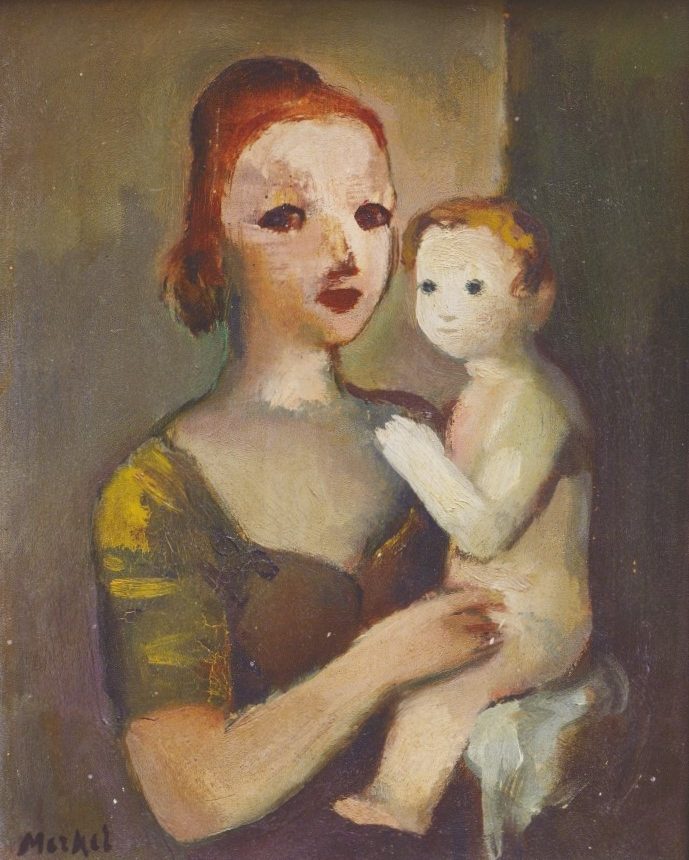Sigmund MENKÈS
Январь 3, 2019Béla MESZOLY
Январь 3, 2019Жорж МеРКеЛЬ (известный также как ежи Меркель)
ЛЬВОВ (ГАЛИЦИЯ) 1881 – ВЕНА 1976
Жорж Меркель, родом из скромной семьи, зарабатывал на жизнь, декорируя квар- тиры. Он начал учёбу в Школе декоративных искусств в Лодзи с Иосифом Мехофером и Станиславом Выспяньским. В 1903 году, благодаря финансовой помощи одного друга, он поступил в Школу изящных искусств Кракова и через два года получил серебряную медаль. Меркеля рано привлекал Париж — город великих мастеров. Он приехал в Париж в 1905 году и остался там на три года, а затем вернулся в Краков. В 1909 году Меркель снова приехал в Париж, где женился. В начале Первой мировой войны Меркель был завербован в австрийскую армию.
В 1917 году был ранен. Перенёс операцию на мозге, которая грозила ему слепотой. В период между двумя войнами художник жил в Вене. В 1939 году Меркель уехал во Францию и укрылся в Монтобане. По окончании войны Меркель вернулся в Париж и устроился в Плесси-Робинсоне. Последние годы жизни он провёл в Вене.
Nieszawer & Princ
"Artistes juifs de l’Ecole de Paris 1905-1939"
Editons Somogy 2015
Stories of Jewish Artists of the School of Paris 1905-1939
FRENCH-ENGLISH
Capitale des arts, le Paris des années 1905-1939 attire les artistes du monde entier. De cette période de foisonnement, un terme est resté, celui d'Ecole de Paris, qui recouvre une grande diversité d'expression artistique. Dans ce brassage dont Montparnasse est le creuset, un groupe se distingue : celui des artistes juifs venus de Russie, de Pologne et d'Europe centrale. Si leurs styles sont variés, un destin commun les rassemble : ils fuient l'antisémitisme de leur pays d'origine. Certains ont connu la célébrité dès les années 1920, tels Soutine, Lipchitz ou Chagall. D'autres n'ont pas eu le temps ou la chance d'y accéder. Près de la moitié a péri dans les camps de concentration nazis.
From 1905 to 1939, Paris attracted artists from all over the globe as the capital of the art world. This period of artistic proliferation became known as the School of Paris, and includes a great diversity of artistic expression. Within the teeming art world centred on Montparnasse, one group set itself apart: Jewish artists from Russia, Poland, and Central Europe. Although their styles were diverse, they shared the common fate of fleeing anti-Semitic persecutions in their home countries. Some became famous in the 1920s, such as Soutine, Lipchitz, and Chagall, while others did not have the time or the luck to gain renown. Nearly half of these artists died in Nazi concentration camps.





